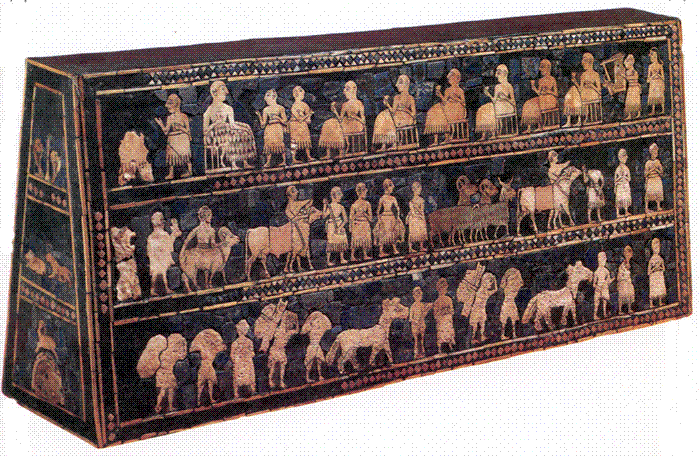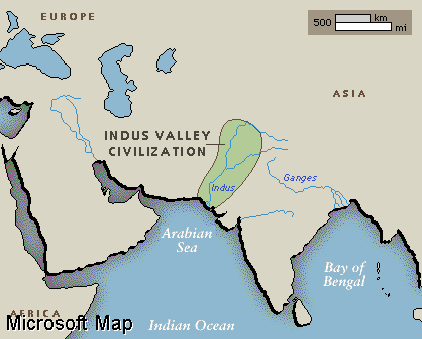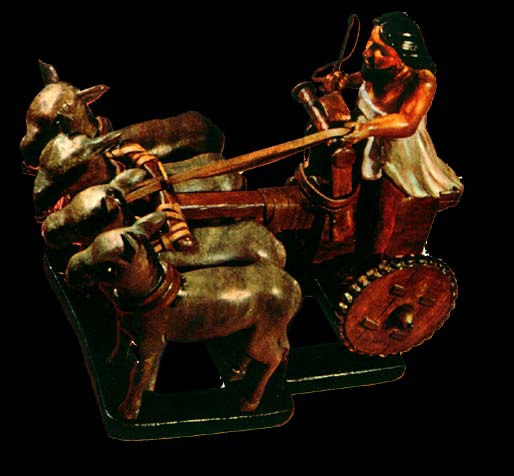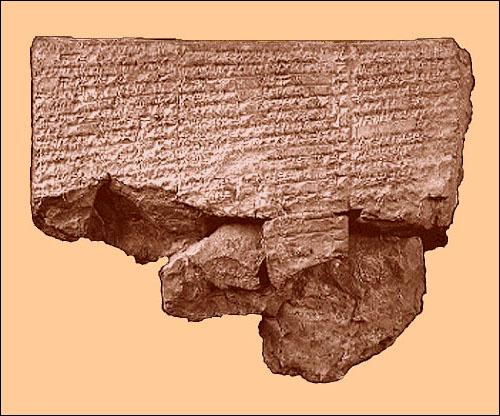Apocrypha: The Sumerians and Akkadians
"It happened, when men began to multiply on the face of the earth, and daughters were born to them, that the sons of Elohim saw that the daughters of men were beautiful, and they took for themselves wives of all which they chose. And Yahweh said, 'My Spirit will not strive with man forever, because he also is flesh; yet will his days be one hundred and twenty years.' The Nephilim were in the earth in those days, and also after that, when the sons of Elohim came to the daughters of men. They bore children to them: the same were the mighty men of old, men of renown." -Genesis 6:1-4
The Cradle of Civilization
Jericho is the oldest known city in the world, stretching back some 11,000 years into the past. At 846 feet below sea level, it is also the lowest city. The ancient settlement is located in a fertile landscape on a major Mediterranean trade route and surrounds a permanent spring near the Dead Sea. By 8000 BC, the population reached 1,500, far above any other site of the time. Around the same time protective walls were erected around the settlement. Jericho is famous today for the Bible story in which Yehoshua (Joshua) follows Yahweh's command to march the army of the Hebrew refugees from Egypt around the city for seven days before sounding seven trumpets, causing the city's walls to come down.
The second oldest archaeologist site is Chatal Huyuk, further north in Turkey, dated at 6700 B.C. Both sites have turned up evidence of the ritual decoration of skulls, dating back to the proto-Neolithic and Neolithic eras. Some skulls have been scraped, painted with red ocher or bitumen, while others have had shells placed over the eye sockets.

Chatal Huyuk Hunting Painting
Civilization first sprung up in the Mesopotamia's fertile crescent, an area stretching from the Mediterranean sea, down the rich land fed by the Tigris and Euphrates rivers, all the way to the Persian Gulf, creating a landscape of great fruitfulness of life amongst a harsh desert wasteland. On the west side of that crescent is Jerusalem ("City of Peace"). At the eastern point are the ancient cities of Ur ("City") and Eridu ("Good City") in Iraq.

Neolithic Tower, Jericho, 8000 BC2

Fertile Crescent, Mesopotamia
The expansion of farming settlements across the Tigris and Euphrates is reflected by a series of four cultures, which are separated by their pottery styles. The first community that can be attested to is the Hussuna culture (6500-6000 BC), who lived on the Iraqi/Syria/Turkey border, where later day Assyria would be make it's capital. They bred sheep, goats, pigs and cattle as well as farmed. They also grew barley and smelt copper and lead. They were the first to create painted pottery and the first to use the stamped seal, which became a popular symbol of ownership in Mesopotamia.
They were later replaced by the Halafian culture (6000-5400), which spread out much further than the Hussuna and were ruled by chiefs who amassed large amounts of wealth and probably controlled all matters of trade. Contemporary with the Halafians is the Samarran culture (6000-5500), which overlaps the Hussuna on their southern border. Unlike the Halafians, the Samarrans developed large scale irrigation techniques that allowed them to farm on the more barren southern land. The Ubaid culture (5900-4300), stretched out down the banks of the Tigris and Euphrates to the Persian Gulf, also branching out west to Ugarit and the Mediterranean Sea. Large amounts of Ubaid pottery have also been found further south along the Persian Gulf including Bahrain island, indicating that there were trade links between Mesopotamia and Arabia. Their advanced irrigation techniques allowed them to harvest an almost rainless land. Clay tokens mark the first evidence of a monetary system. Around 5000 B.C. the first towns and temples were built. Not too long after the invention of the plow, the sail and the wheel (first used in pottery), the Ubaid period came to a close after about 1,500 years, succeeded by the culture of the Uruk period.3
The first cities emerged in this land around 4300 BC, the largest of which was Uruk (Erech; Iraq). It's ancient city wall, measuring 9.5 miles, is attributed to the warrior-king Gilgamesh. Most cities of this early time held between 2,000 and 8,000 people but Uruk itself held over 10,000. At first, the temples built carried the same building traditions as that of the Ubaid culture, but they later grew in size and magnificence and were painted with mosaic patterns of red, white or black.
The Uruk period (4300-3100) is characterized by a great migration from the north, situated around the city of Nippur, to the south, around Uruk. This took place from the Early-Middle Uruk Period, when an ancient river fed by the joining of the Tigris and Euphrates flowed right next to Nippur, to the Jemdet Nasr Period, some 1,000 years later when the river's course may have changed.3
Where the Sumerians originated from is a mystery. Samuel Noah Kramer, one of the most presitgious Sumerologists and no doubt the most famous, has argued that they came from India. The historian J.M. Roberts has suggested that they were Caucasians, migrants from the Caucasus mountains between the Black and Caspian sea, like their eastern neighbors from Elam (Iran).4 They also may have originated from the island of Dilmun, which has largely been identified with, among others, Bahrain and Crete. There's no way to tell if the Sumerians were descendants of the Ubaid culture or if they simply conquered it, but they were firmly established in southern Babylonia in Iraq by at least 3500 BC.5 They are the first people known to use the 60 second minute, the 60 minute hour, the 360 degree circle and the 24 hour day (which they divided into four sets of 6 hours). This 60-base system was tied in with the fact that 60 was the sacred number of An, the head of their pantheon who resided in the heavens. Likewise, 50 was given to the air god Enlil and 40 to the god of the waters, Enki.
Sumerian clothes are portrayed in their seals as furry, probably being sheep or goat skin. Sumerian men wore kilts and grew their hair long. Most were clean shaven while others had curly mustaches and beards. Women's dresses kept one shoulder bare and cloaks were worn in the winter. Priests and doctors kept their heads and faces shaved. Soldiers did not seem to wear any set uniform, except perhaps a pointy cap.5 Some Sumerian rulers wore loose ankle-length shawl over their left shoulder. There is some evidence that prior to 3000 B.C., the average Sumerian worked in the fields naked.6
Wealthy families were able to send their male children to schools, where they studied economics, administration, and creative writing, often graduating to become scribes for the temple or palace. School texts indicate that tablet copying was a large part of the curriculum and that caning and scholastic bribery were practiced to a good extant.5
A man was allowed to marry only one wife but could take concubines and women could own property and sign business contracts. Although some marriage contracts forbid the taking of a concubine, little stigma was attached to married men going to temple prostitutes. Divorce (which involved a hem cutting ceremony before a witness) was allowed in some cases, such as the inability to conceive a child, but there are few documents of actual cases. Adoption was largely practiced, mostly for the desire of continuing the family name. Children were required to show great respect towards their parents at the threat of being disinherited or sold. To a lesser degree, respect was also demanded of an older brother or sister.6
Slavery was practiced but slaves were still protected by law somewhat. Slaves could still conduct trade, take loans, and could even buy their way out of the circumstance. The majority of slaves were prisoners of war, but also consisted of criminals, debtors, children of slaves, and of those sold by their parents. A slave usually cost about 20 shekels, less than ass. Anyone could end up becoming a slave, so it was not truly a caste system and marriages between slaves and free people were quite common.6 Females were sold as concubines but sometimes provisions in the sale contract could provision her marriage to another slave.6

Standard from Ur
The name 'Sumer' is derived from the Babylonian name for the southern part of Babylonia. The Sumerians actually called their country Kengi ("Civilized land") and called themselves Saggiga ("The black-headed ones" or perhaps "bald-headed ones"). The Sumerian language started off as pictograms etched into wet clay tablets and was probably the inspiration for Egyptian hieroglyphics. The Sumerians are generally believed to have invented writing as some of the earliest known texts come from them in Uruk around 3400 BC. By then it was already a complex system with over 700 signs. This pictography is believed to have been adapted into other languages, including the language of the Elamites and of the Indus Valley civilization, a culture that thrived in Pakistan and parts of Afghanistan and Northern India around 2500-1750 BC. Symbols drawn on Indus Valley pottery recently excavated from Harappa predate even the earliest Sumerian writing (3500 B.C.), but are not as complex.7 By 2000 BC, The Sumerians were using goods traded, however indirectly, from the Indus Valley. After the decline of the Indus Valley, the culture fell into obscurity until traces of it were rediscovered in the 1920s.

Around 2900 BC, Sumerian pictography was simplified into a language known as cuneiform, named for it's left wedge-shaped strokes. The cuneiform were written sideways, losing the pictographic quality it once had. This is generally believed to be the first evidence of true language, although some archaeologists believe that inscriptions found in the tomb of the Scorpion King, Egypt's first monarch, and dated to 3400-3300 B.C., qualifies as symbolic representation and therefore beat the Sumerians to the punch.8 Three different forms of Sumerian cuneiform developed before the language became widespread. Some of this language that they called 'Emegir' survives to this day: The Sumerian words mayakku ("confuse"/"intoxicate") and kohl ("eyeliner") are related to the Hebrew kakhal ("paint") and the Arabian al-Kahl ("the eyeliner"), which is today termed 'alcohol'. Similarly, the Sumerian word kanubi ("cane of two [sexes]") is the root of the modern word 'Cannabis'.
Each of the Sumerian city-states was headed by a temple devoted to one of the gods of their pantheon, which owned about two-thirds of the land. Each god acted as a kind of mascot for the city, and actions done by armies of each city were often metaphorically described as the actions of the city's personal god. The head of the pantheon resided in Uruk, which was often the capital of Sumer, although it was in fierce competition for kingship with most of the other cities, especially Ur and the Akkadian city of Kish. Although Nippur was never a capital itself, no king was considered legitimate without it being sanctioned by that city. Located in the very middle of Sumer and Akkad, 80% of all Sumerian literature found has been excavated from Nippur.

Sumerian charioteer, 2800 B.C.

Nippur Tablet
<<Homepage
Chapter 2>>
|



